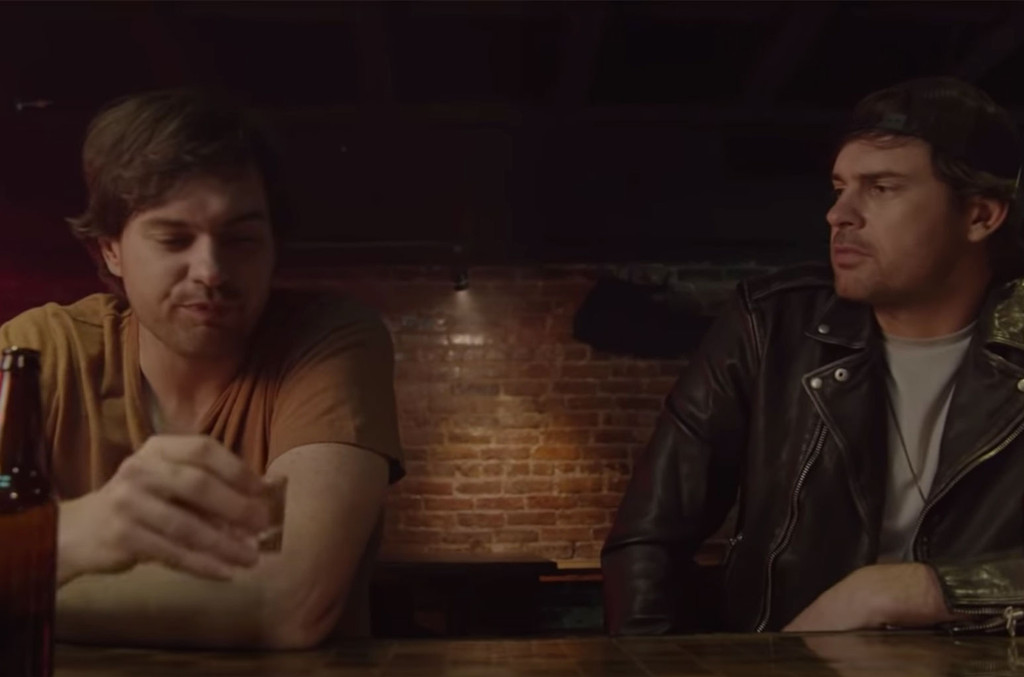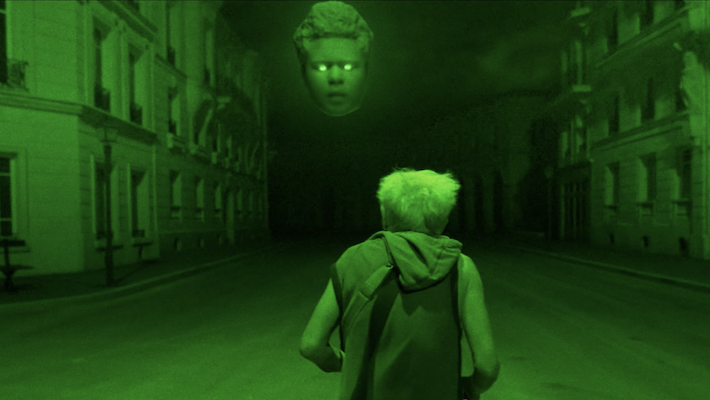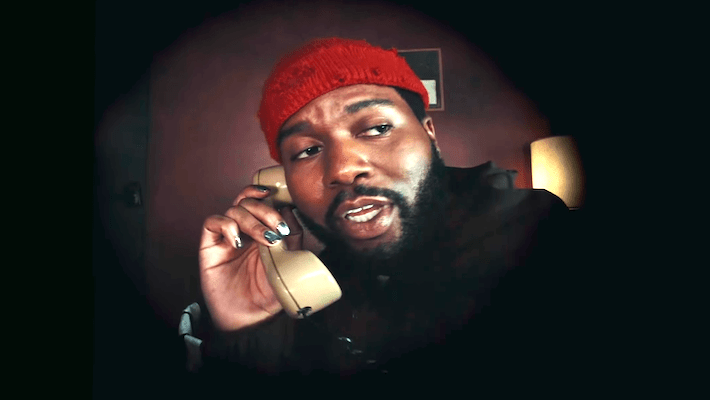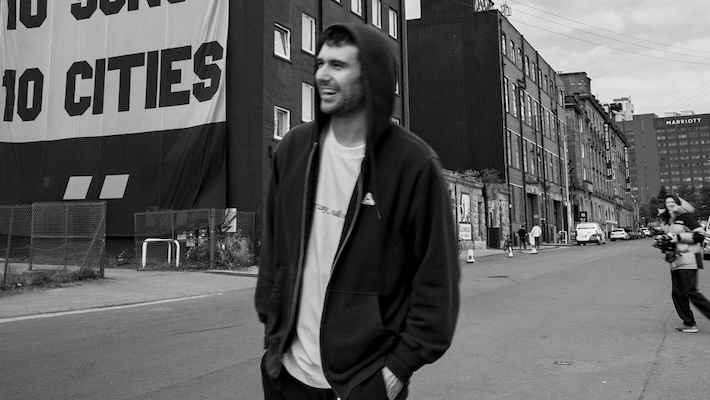The morning after a night of protest in downtown Nashville, Matt Stell snuck into the Fleet Street Pub in the city’s Printer’s Alley, occupying the space for 12 hours as he portrayed 13 different characters for the video to “If I Was a Bar.”
In the end, the project had Stell interacting with different versions of himself, a clever, humorous way to build a story and create online content at a time when plenty of consumers are isolated and searching for entertainment. It’s also a victory over creative limitations, given that social-distancing practices related to the coronavirus forced him to do the shoot as the lone on-camera actor, captured by a skeletal three-person crew.
“My mind was geared on ‘What can I do without bar extras or all these different patrons we’d have, including a bartender?’” says video director Dustin Haney. “I had pretty much nobody to work with, so I kind of took that from there and went, ‘Well, what if I just use Matt a bunch of times over?’”
The clip is just one of numerous examples of directors and producers finding ways to flex their creative muscle amid restrictions imposed by COVID-19. Danielle Bradbery took a sexy walk through a lonely field for her “Never Have I Ever” video. Cole Swindell did a herky-jerky version of the moonwalk in a NASA-themed shirt during the “Single Saturday Night” video. And Kane Brown shot appearances on two NBC shows — The Voice and The Tonight Show Starring Jimmy Fallon — on the same day, using a green screen to make “Cool Again” look different on both programs.
“The virus has definitely made making videos more difficult,” says Brown. “In the past when we had the opportunity to tape a performance like The Voice, we would fly to L.A. and record in front of an audience with all of the show production. Now we have to figure it out ourselves and try to still make it look good.”
And they have to make it safe, too. Record labels and video production companies have all established guidelines for on-set behaviors. Crews are kept small to make social distancing easier; masks are required, except for actors while they are being filmed; the production sites are scrubbed in advance of the shoot; hand sanitizer is plentiful; and all foods are boxed and individually wrapped, eliminating the buffet setup that was previously standard for a shoot.
Complicating matters, some video professionals are understandably squeamish about working in public spaces during the COVID era, forcing producers to hire from a smaller talent pool.
The work, however, is fairly plentiful. With concerts on hold for the foreseeable future, video is increasingly important as a vehicle for exposure. Both official and lyric videos, as well as TV and concert performances, are in larger demand, and since the crews are smaller, the productions generally cost less, allowing labels and artists to finance more shoots.
But the creators are doing their best to heighten the quality, and variety, of the productions. The industry initially responded to self-isolation with a parade of live, at-home Facebook and Instagram events. Those attempts quickly lost their novelty, and video pros made inventive adjustments within the pandemic’s limitations, such as the split-screen effects director Haney employed in Stell’s “If I Was a Bar.”
“Dustin came up with that cool idea,” explains Stell. “Necessity is the mother of invention. Figuring out the way that we could do something fun and creative within this space, sometimes it does almost help to have some boundaries to push against.”
To facilitate the collection and rollout of the videos, labels have made adjustments, too. At Big Machine Label Group, creative content/asset manager Seth Hellman developed three simple video kits, each of which includes an iPhone with dual-camera technology, a high-grade microphone, a tripod, instructions and return packaging. The label sends a kit to an artist, who can easily create the content and ship the kit back to the label, where the phone is sterilized and the materials are downloaded and distributed.
Even when the business returns to some level of normalcy, the video kits are likely to remain a part of the BMLG creative department’s practices.
“Especially with some of our artists that don’t live here in Nashville, it’s not easy to have them just, you know, ‘Hey, hop on over here tomorrow at four; we need some liners from you,’ or, ‘We need just a little bit of content,’” notes senior vp creative Sandi Spika Borchetta. “Almost all of them actually are really savvy with capturing things on their own phone. So this is a step above that.”
Given the current explosion in COVID-19 cases and the likelihood that a vaccine will not be available until 2021, smaller video productions might be the only realistic alternative for another year or so. BMLG employees and artists are flying rarely, if at all, for safety reasons, so most videos are made near the act’s locale. The lone exception so far is Bradbery’s “Never Have I Ever” clip. Since her home is a three-hour drive from Austin, she met director Peter Zavadil there and purposely conducted the shoot outdoors, which is currently considered to be a safer environment than an indoor site.
“It was a very, very small, stealth crew,” says Borchetta. “They shot an interview with her, we got liners, they shot footage for the music video, and everybody was masked up. They had gloves on, they stayed far apart and it was very isolated.”
While the video pros are finding ways to work around COVID, it becomes more difficult with each shoot to find new, creative ways to react to the pandemic.
“The videos are more cost-effective and that’s great for the short term,” says Brown’s video director, Alex Alvga. “However, we can’t do performances like this indefinitely. I don’t think I’m speaking just for myself, but I do look forward to a time when we can get back to fuller performances.”
Even when that time arrives, the coronavirus era will likely leave a mark because it’s forcing creative adjustments and imprinting memories on the participants.
“As different as it was, I’ll never forget it,” says Swindell of the green-screen production behind “Single Saturday Night.” “I’ll probably never shoot another video like it.”




